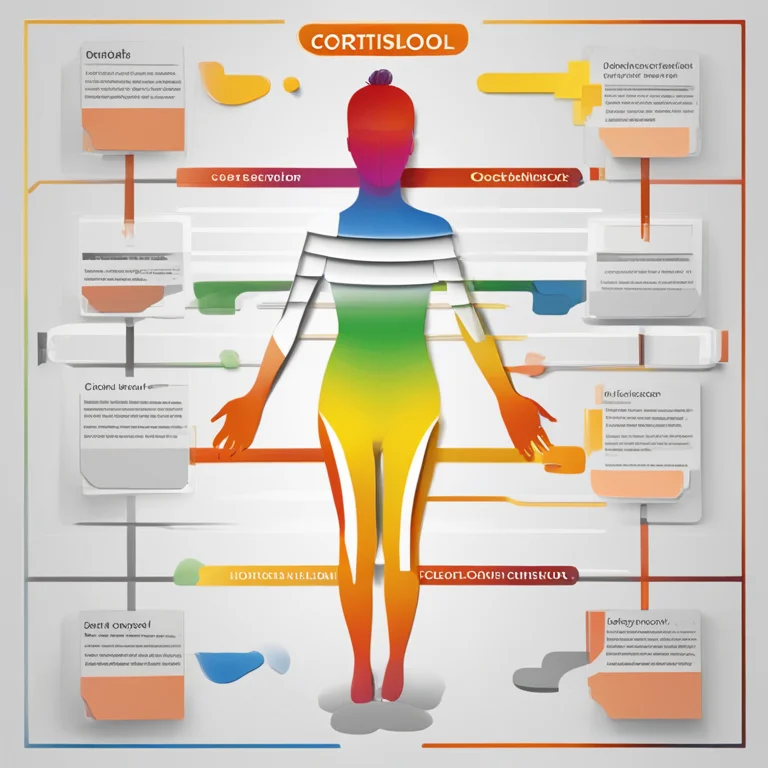
Lower Cortisol with Serene Meditation Techniques
Discover how meditation can reduce stress hormones and promote tranquility in your daily life through practical, calming methods.
article by Hina Kurosawa
Cortisol: Stress's Chemical Messenger
Stress is an almost inescapable aspect of modern life, and its biochemistry centers around cortisol, a steroid hormone produced by the adrenal glands. As the body's primary stress hormone, cortisol regulates numerous processes including metabolism and the immune response. However, when levels remain high due to chronic stress, it can adversely affect your health, leading to issues such as weight gain, sleep disturbances, and even cognitive difficulties. Fortunately, meditation has been shown to be a powerful tool in moderating cortisol levels, encouraging a state of relaxation and improved wellbeing.

Meditation's Impact on Cortisol Reduction
Numerous studies indicate that regular meditation practice is associated with a decline in cortisol production. Mindfulness meditation, in particular, encourages practitioners to focus on the present moment with nonjudgmental awareness, which can break the constant stream of stress-provoking thoughts. With time, this practice not only reduces stress but also decreases the body's cortisol response, enhancing the body’s resilience to future stressors.

Integrating Meditation into Your Routine
Incorporating meditation into a daily routine doesn’t require extensive changes. Even short bouts, such as a five-minute deep breathing session or a ten-minute guided meditation, can have beneficial effects. The key is consistency. Building a habit of meditating at the same time each day, perhaps during the morning or just before bed, can enhance the practice's effectiveness and make it a treasured part of your daily self-care regimen.

Choosing the Right Meditation Style
With various meditation techniques available, choosing one that resonates with you is imperative for sustained practice. Techniques range from focusing on the breath, such as in Vipassana meditation, to more active forms like Kundalini which incorporates movement and mantras. Experiment with different styles to see what best suits your preferences and lifestyle. The goal is to find a meditation format that feels less like a task and more like a refreshing pause in your day.
Meditation Aids and Environmental Setup
Creating a conducive environment can enhance your meditation practice. Minimizing noise and distractions, using comfortable cushions or chairs, and maybe including calming scents or background sounds can all promote a deeper meditative state. Some people find that guided meditations or binaural beats aimed at stress reduction can help maintain focus and reduce mental chatter, further aiding in lowering cortisol levels.
Tracking Progress and Adjusting Practices
Recognizing the benefits of meditation might not be immediate, and it’s important to be patient. Keeping a journal or using apps that track mood and stress can help in noticing gradual changes over time. Be flexible and make adjustments to your practice as needed. If a particular style isn’t resonating with you after giving it a fair chance, consider exploring another method. The most effective meditation practice is one that you look forward to and fits seamlessly into your life.
Conclusion: Embracing a Calmer Lifestyle
Meditation, through its capacity to reduce cortisol and stress, holds the promise of a calmer, more centered life. By introducing and sticking to a meditation practice, you are taking an empowering step towards managing stress and its physical manifestations. Remember that the journey to reduced cortisol levels is a personal one, and finding the right balance for your lifestyle is key to a successful meditation practice.
Published: 1/9/2024
Modified: 1/9/2024
More predictions
Come back here soon to learn more about yourself and your future


Serenity Through Meditation Retreats
Embark on a transformative journey at a meditation retreat to recharge, refocus, and reconnect with your inner self.


Retreat into Serenity: A Meditation Haven
Discover the transformative power of a meditation retreat and find tranquility for mind, body, and spirit in our comprehensive guide.


The Serene Path: A Guide to Meditation Retreats
Discover the transformative journey of meditation retreats and how they can enhance your spiritual practice in a serene environment.